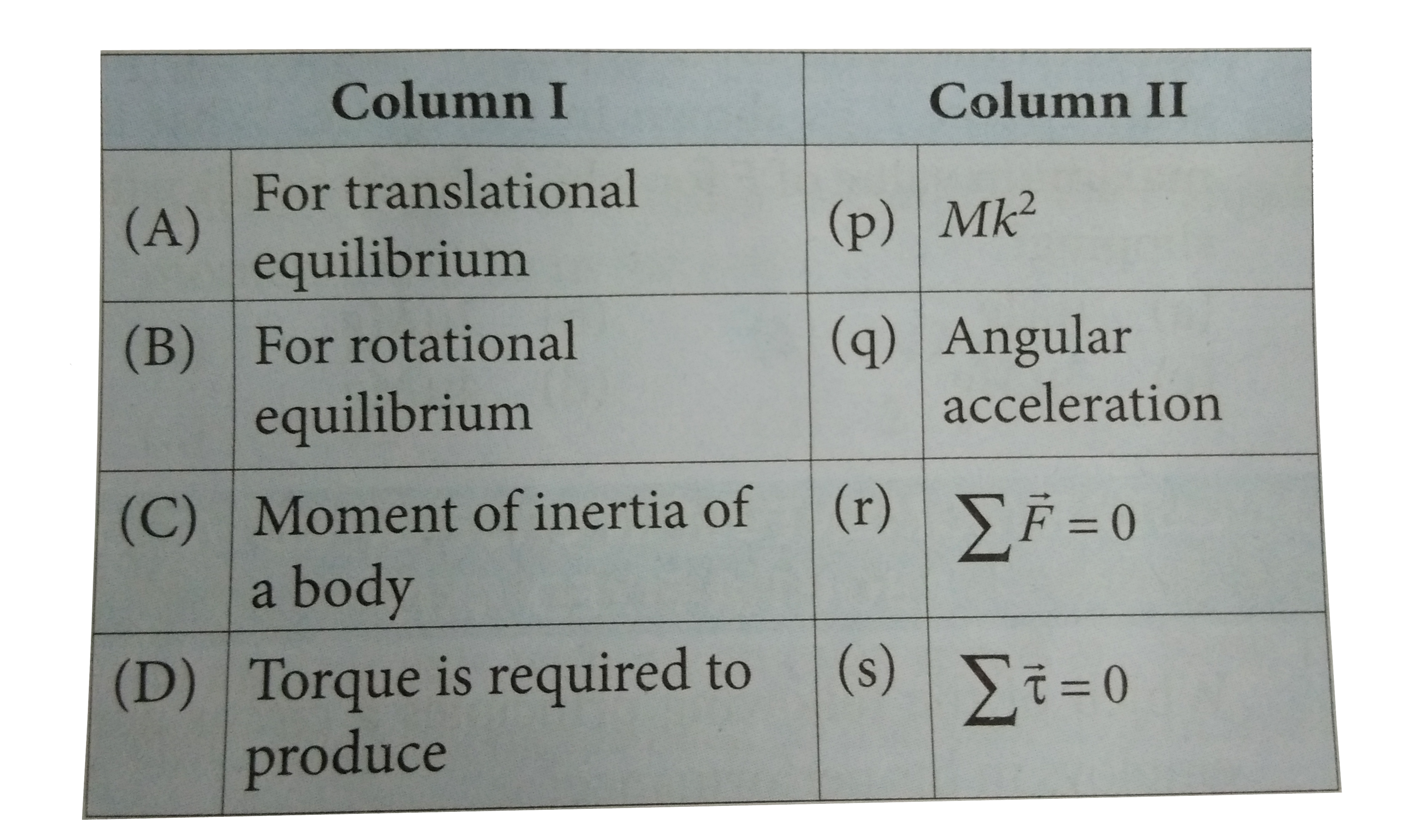Match the columns
Column I Column IIaHarversian CanalpKidneybDendritesqCartilagecSarcolemmarMuscledChondrocytes sNerve cells−−tBone
A = p , B = r, C = s , D = t
A = q , B = r , C = s, D = t
A = s, B = t, C = q , D = r
A = t, B = s, C = r, D = q
The correct Answer is:D
To solve the question of matching the columns, we will analyze each item in Column I and find its corresponding match in Column II step by step.
1. Match Haversian Canal (a):
- The Haversian canal is a central channel in bone that contains blood vessels and nerves. It is a characteristic feature of bone tissue.
- Match: Haversian Canal (a) → Bone (t)
2. Match Dendrites (b):
- Dendrites are the branched extensions of a neuron that receive signals from other neurons. They are associated with nerve cells.
- Match: Dendrites (b) → Nerve cells (s)
3. Match Sarcolemma (c):
- Sarcolemma is the plasma membrane surrounding muscle fibers. It is specifically related to muscle tissue.
- Match: Sarcolemma (c) → Muscle (r)
4. Match Chondrocytes (d):
- Chondrocytes are the cells found in cartilage. They are responsible for the maintenance and formation of cartilage.
- Match: Chondrocytes (d) → Cartilage (q)
Final Matches:
- a → t (Haversian Canal → Bone)
- b → s (Dendrites → Nerve cells)
- c → r (Sarcolemma → Muscle)
- d → q (Chondrocytes → Cartilage)
Conclusion:
The correct matches are:
- a → t
- b → s
- c → r
- d → q
Thus, the final answer is:
- A → t
- B → s
- C → r
- D → q
- The Haversian canal is a central channel in bone that contains blood vessels and nerves. It is a characteristic feature of bone tissue.
- Match: Haversian Canal (a) → Bone (t)
- Dendrites are the branched extensions of a neuron that receive signals from other neurons. They are associated with nerve cells.
- Match: Dendrites (b) → Nerve cells (s)
- Sarcolemma is the plasma membrane surrounding muscle fibers. It is specifically related to muscle tissue.
- Match: Sarcolemma (c) → Muscle (r)
- Chondrocytes are the cells found in cartilage. They are responsible for the maintenance and formation of cartilage.
- Match: Chondrocytes (d) → Cartilage (q)
- a → t (Haversian Canal → Bone)
- b → s (Dendrites → Nerve cells)
- c → r (Sarcolemma → Muscle)
- d → q (Chondrocytes → Cartilage)
The correct matches are:
- a → t
- b → s
- c → r
- d → q
- A → t
- B → s
- C → r
- D → q
Topper's Solved these Questions
Similar Questions
Knowledge Check
- Question 1 - Select One
Match the Column I and Column II.,B
 AA-p, B-q, C-r, D-sBA-q, B-r, C-s. D-pCA-r, B-q, C-p, D-pDA-r, B-s, C-p, D-q
AA-p, B-q, C-r, D-sBA-q, B-r, C-s. D-pCA-r, B-q, C-p, D-pDA-r, B-s, C-p, D-q
Match the columns
Column IColumn IIaCartilagepNeurilemmabBoneqSarcolemmacMuscle FibrerPerichondriumdNeuronsPeriosteumtPericardiumView SolutionMatch the columns
Column IColumn IIaGlycogenpHormonebGlobulinqBinocatalystcSteroidsrAntibodydThrombinsStorage ProductView SolutionMatch the columns
Column I Column IIaLigamentpStores FatbTendonqConnects Bone to BonecAreolar TissuerConnects Muscle to BonedAdipose TissuesForms Blood cells−−tFilling TissueView SolutionMatch the columns
Column I Column II(i)Chondrocyte(a)Bone forming (ii)Osteocyte(b)Cartilage forming(iii)Osteoblasts(c)Bone maintaing(iv)Osteoclast(d)Bone eatingView SolutionMatch the columns
Column IColumn IIaBicuspid valvepBrainbNephronqLivercAlveolirHeartdCerebrumsKidneytLungsView SolutionMatch the column and find correct combination:
Column IColumn II(a)DrawinpMutation theory(b)De VriesqProtobiosis(c)PasteurrOrigin of species (d)FoxsSpecial creationtSwan-Necked Flask ExperimentView SolutionMatch the columns
Column-IColumn−IIasalivapDisaccharidasesbGastricqTrypsincPancreaticrPtyalinbIntestinalsPepsintCellulaseView Solution


